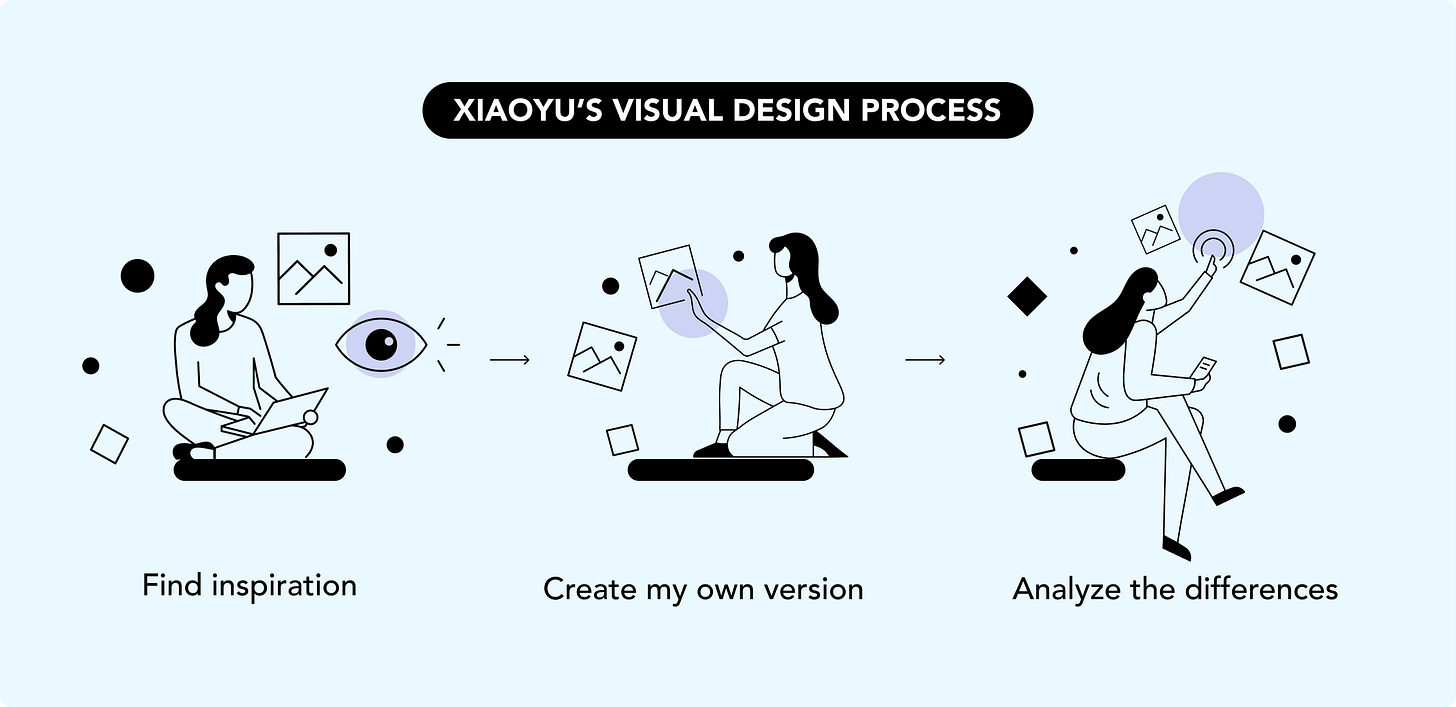A little progress each day adds up to beautiful results
A chat with Xiaoyu Ji about advancing visual design skills (Part I)
Xiaoyu currently is a Sr designer at Uber Safety, known for her high-quality design. Outside of her daily job, her identical work has won her several rewards like Best YC Logo.
I have known Xiaoyu for over ten years and have always been amazed by her visual craftsmanship with phenomenal attention to detail. I recently sat down with her to chat about her growth path, her passions, and the advice she would give to those who want to improve their visual skills.
Meet Xiaoyu
What do you do at Uber?
Uber has pioneered many safety technologies and features, many of which have now been adopted by other companies in the industry. I help define the vision of safety and craft all kinds of safety experiences, including trip safety monitoring, live emergency support, ultrasound trip identity verification, facial verification, privacy, and data security.
What I love most is that an Uber safety experience will go way beyond the screen, and designers are challenged to always think in context and design for human emotions
What kept you motivated in refining your visual design skills?
Good visuals impress people without a word.
When I first started my career, I struggled to stand out among other experienced designers. As a non-native speaker, I was not eloquent enough to communicate my ideas precisely. At the same, I thought visual design can be the fastest way for me to build a personal brand without talking a ton. That’s why I decided to spare no effort in strengthening my crafting skills.
In addition, I’m really passionate about beautiful designs. I enjoyed my time experimenting with small visual details. The corner radius of a card, the shadow of an element, the proportion of the color palette, all of these visual details matter and together can make a huge impact.
When designing, how do you walk the line between being visually appealing and effectively communicating the information?
I would always prioritize effective communication and avoid visual redundancy.
For example, when designing presentation slides, the first thing I think about is what I want to communicate to the audience. Then I will add images and other visual elements to add context. Following the step, I like polishing visual appeal by adjusting the small details like typography and page decorations. Last, I would check and remove any unnecessary visual noises.
What helped you most in improving your visual design skills?
I grew tremendously by learning (and stealing”) from other design masters. This is the method I apply everywhere, in product design, photography, and even illustrations. As soon as I have a rough idea of what I want, I start to seek visual inspiration.
There are many good resources today like dribble, land-book, etc. I would crowdsource, select a style, create my version and compare my version with the original. By repeating this process over time, I can close the gaps and see what others would not normally see, like the page hierarchy, typeface, color palette choices, etc.
I also benefited heavily from expert feedback. During my first internship, I was lucky to have had a very strict mentor who trained me to pay attention to pixel-level differences that one could easily ignore. Skeuomorphism was still trending at that time and I learned to pay attention to 1px inner shadows and 5% inner glows. Once I started noticing these details, I was able to find sparks everywhere, like in paintings, movie posters, etc.
Another tip I have is to always leave enough time for iterations. Analyzing every design element, tweaking the color tones, and adjusting the visual hierarchies take time. I spared no effort in pushing my limit, and I made sure I have enough time for the pushes to happen.
What advice you would give to your younger self?
I would advise myself to be patient, take smaller steps, and trust that time will do its justice. In my early career, I wasted a ton of time searching for the “most time-efficient way” to help me succeed sooner. I dreamed of becoming a design expert within a few weeks, or even a few days and was frustrated when I was not fast enough.
Then I realized that there is no such shortcut. As Gladwell tells it:
“if you practice one skill for 10,000 hours, you'll have a good chance at becoming an expert at it.”
The visual design language is a complex one to master. The only way to advance ones’ visual skills is to take small steps and practice them day by day. Believe me, 1% of progress each day adds up to beautiful results.

Special thanks to
Xiaoyu Ji for sharing her expertise with us
Lu Liu for helping us organize the interview notes







